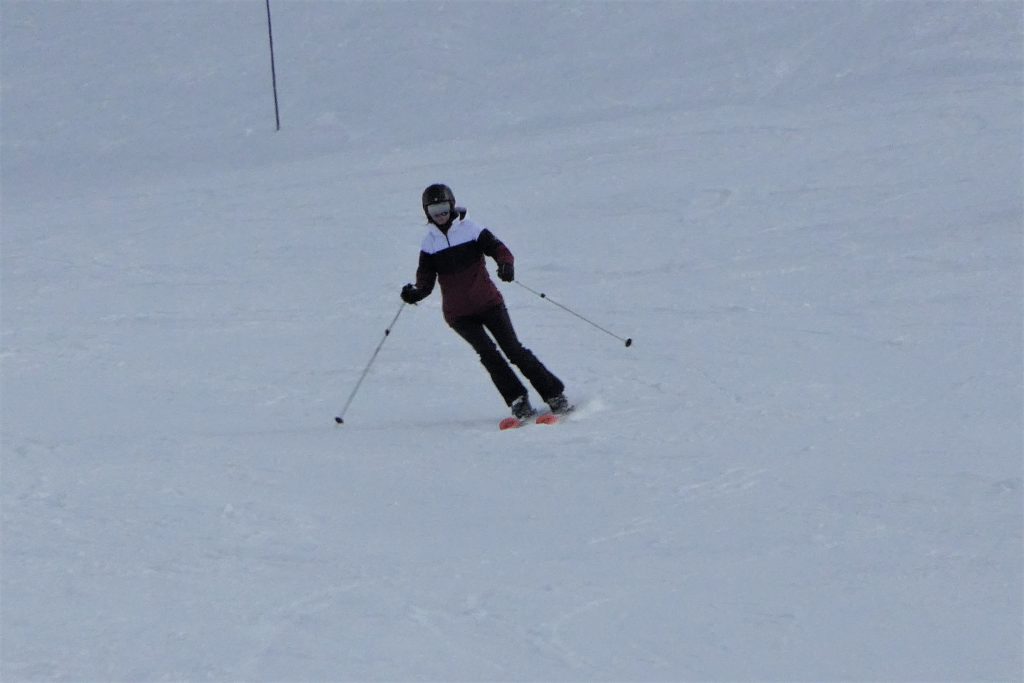Observing the overall skiing first thing this morning Brian was tending to lift his inside ski on each turn initiation and then flex down excessively with harsh edging through the turn.
Alex was somewhat opposite – popping up with the push from the uphill leg.
Both were relatively static regarding the range of leg movement.
Basically, Brian needed to stand up more and both needed an improved range of leg motion and both needed to work on using the downhill ski to complete the turn – bringing the Centre of Mass up and out of the existing turn while on that ski.
Skating Timing
Alex asked the simple question- “When do you bend and extend the legs”. Well you do what’s necessary to get the Centre of Mass to go down toward the turn centre then to come back up out of the turn – and doing so depends on many factors of terrain, speed, legs wide apart, close together, maintaining a rhythm, breaking a rhythm, pivoting, carving and everything in between. You can rebound and spring up into the air through a turn transition or fully retract the legs to cross over the skis minimising the amplitude of the “up” movement.
However – skiing is just curvy skating on a humongous hill so the basic leg action should be skating – taken into an arc. Brian manages to connect with the skating resonance and resonance is where the action of the legs is amplified… Quote: “In the case of resonant systems, they are extremely efficient in concentrating energy. That is they can easily trap incoming energy – especially if that energy rides on say for example waves of the same frequency as that of the system.”
Alex might want to take slalom skis for an afternoon to experiment with!
Off Piste
It’s clear that in cruddy snow where the turn initiation is precarious then skating timing rules! You have to come over that lower ski with complete commitment for the next turn – waiting to take over with the uphill leg until you see that your centre of mass in on the inside of the new turn. Fronts of the skis are obligatory – pressure on the fronts of the boots.


